Days at Sea
{day} Days {hour} Hours {min} Minutes {sec} Seconds
Days at Sea
{day} Days {hour} Hours {min} Minutes {sec} Seconds
Days at Sea
{day} Days {hour} Hours {min} Minutes {sec} Seconds
Days at Sea
{day} Days {hour} Hours {min} Minutes {sec} Seconds

On Monday 3 June 2024 Asia’s first ocean rower, Chinese national 孙海滨 (Sun Haibin) and Denmark’s first ocean rower, Christian Havrehed ( 黄思远 ), will embark on a 1,300km row from Zhoushan, China, to retrace the route of China’s first maritime explorer, Xu Fu (徐福), who in 210BC was sent by the First Emperor, Qin Shi Huang, to search for the Elixir of Immortality in the Eastern Seas.
The first leg of the row is an off-shore non-stop 800km crossing of the East China Sea to Nagasaki. Here the pair will clear into Japan early June before continuing on a 500km coastal row round the Southern tip of Mainland Japan, Cape Sata, and up the east side of Kyushu Island to Nobeoka, where they expect to complete their row Sunday 30 June 2024. The total distance of the row is 1,300km.
Along the way the oarsmen will visit locations in Japan dedicated to Xu Fu (known in Japan as “Jofuku”) and make cultural exchange activities with the local Xu Fu Associations to celetrate and promote the story of Xu Fu.
They will also be supporting the UNs Sustainable Development Goal 14, Life Below Water, by doing citizen science for Eyesea and Scripps Institution of Oceanography, as well as offering Xu Fu Environmental Scholarships to students in the ports they call on.
The row is set to make expedition history as no one has been allowed to row out of China before. The row has also been recognised by the Explorers Club and has been granted expedition flag nr. 139 to bring on the voyage.
An international Xu Fu Conference is being planned in Nobeoka 30 June 2024 to celebrate the oarsmen’s arrival and the completion of the New Xu Fu Voyage East Expedition.

Xu Fu’s Voyage East ( 徐福东渡 ) is one of the earliest documented voyages in official Chinese history (Records of the Grand Historian by Sima Qian). The late Joseph Needham ( 李约瑟 ), who initiated the book series Science and Civilisation in China, published by Cambridge University Press, and after whom the Cambridge Needham Research Institute is named, believed Xu Fu may have travelled all the way to America.
Based on Needham’s research, two explorers have attempted to cross directly across the Pacific Ocean to America using their best guesses of the vessel Xu Fu may have used.
In 1974 Kuno Knöbl set out in a junk from Hong Kong and in 1993 Tim Severin set sail in a bamboo raft from Vietnam. Both vessels sank mid-Pacific, and the crews had to be rescued.
Knöbl and Severin’s failed attempts support the view that ship technology in 210BC may not have been advanced enough for direct Trans-Pacific passages. Instead of a direct voyage across the Pacific Ocean a mainly costal voyage along the North Pacific Rim to America seems more plausible.
This China to Japan row is Stage 1 of a four stage project where Haibin and Christian investigate whether the Chinese could have made it to America pre-Columbus along the North Pacific Rim.
Neither Knöbl nor Severin were granted permission to leave from China, but after more than 30 years of reform and opening up, China is now a different country. To be able to demonstrate this to the world, it has always been Christian’s dream to leave from China as Vietnam and Hong Kong have no connection with Xu Fu. With their 2001 Trans-Atlantic row Haibin and Christian also broke the mold of what was considered possible in China.
Obtaining this historical permission to row out of China could not have happend without a lot of goodwill and support both inside and outside of China, as these Support Letters are testemony to.
Christian and Haibin would like to thank everyone who has helped the project get to this stage and hope many more individuals and corporations from around the world will join them on this exciting journey of discovery. You can follow the expedition log here.
The New Xu Fu Voyage East will provide new insights into where it would practically have been possible for Xu Fu to sail to, given the ship technology at the time. Xu Fu’s navigational limitations is an area of study where very little research has been done. The row will therefore add significant new knowledge to the study of Xu Fu.
The oceans are key to climate change. Without healthy seas, life on land will increasingly struggle. We are therefore pleased to partner with the following entities to better understand how troubled the seas are and what can be done to revive them. A drop-in-the-ocean contribution towards UN SDG 14. Life below water.


In 2017 Dr. Dimitri Deheyn from the Scripps Institution of Oceanography at the University of California, San Diego, was studying jellyfish under a microscope. Unexpectedly, he came across some long blue stringy things he had not seen before. He first thought his microscope lens was dirty and then he thought it was microplastic. But it turned out to be something else. Microfibers from fabric!
When we put our clothes in the washing machine some of the fabric rubs off and eventually ends up in the sea. Like microplastic, it is not yet fully understood to what extent microfibers are harmful to the living organisms ingesting them, but along with microplastic, microfibers are also already in the food chain, and we are ingesting them. And they seem to be everywhere. Microfibers from fabric have even been found in sea water and snow samples at the North Pole.
We are proud to contribute to Dr. Dekeyn’s research by collecting daily seawater samples throughout our 2,234km row. With a bespoke testing equipment we will press 50mL of seawater through a glass filter, which holds back the microscopic stuff in the water. We store these glass filters onboard and once we get to shore we send them to the Scripps Institution of Oceanography for analysis.
The deck of our rowing boat is about 30cm above the surface, so collecting samples will be easy and provide a welcome distraction from the arduous task of rowing. It is going to be interesting to see what the state of affairs is with microfibers in the East China Sea.
Eyesea was established in 2020 to tackle the issue of trash in the sea. Eyesea provides an app for seafarers and volunteers allowing them to take pictures of trash anywhere in the ocean, along the coast, or near waterways with a geotag location.
This data is then collected and analysed in order to understand which areas should be prioritised for clean ups and how best to do it, given the nature of the trash. This information is then passed to organisations and communities, who then do the actual clean ups.
Eyesea is a non-profit membership organisation funded by maritime and shipping companies from around the world.
We are proud to contribute to Eyesea’s mission by using their app throughout our row and talking about what we see. We will be significantly closer to the surface than seafarers on the deck of a 20,000TEU container ship. At 2-3kn, much slower, too! This may allow us to see things that the larger vessels cannot.
Xu Fu is said to have brought many useful things to Japan in ancient times. We have therefore asked ourselves what we can bring to Japan with the New Xu Fu Voyage East to honor Xu Fu’s legacy.
There is no doubt that Climate Change is the key challenge we all face now. That is why we have chosen to contribute to the United Nations’ Sustainable Development Goals (SDGs) 13 Climate Action and 14 Life Below Water with our row.
As a thank you to the ports that welcome us in Japan, Christian Havrehed and Sun Haibin have therefore pledged two Xu Fu Environmental Scholarships to 13 – 18 years old students from these ports.
“Before I came to AP Spring Camp, I felt that solving environmental problems was up to someone else, so I was reluctant to do anything. When I was at camp, I actively considered that it was up to me and started to take action. Being surrounded by the warmth of the locals who have experienced the impact of environmental disaster was a truly valuable experience.”
AtlanticPacific Spring Camp 2023 Participant
The Xu Fu Environmental Scholarship comprises a 5 days / 4 nights sea rescue and environmental awareness Spring Camp held by UK NGO AtlanticPacific at Nebama Bay, Kamaishi in March 2025. The course is valued at JPY105,000 and in addition up to JPY30,000 towards travel expenses can be provided, so that any student from those ports, regardless of wealth, may be able to participate.
See course details here.
To apply for a Xu Fu Environmental Scholarship, register here.

AtlanticPacific is an international humanitarian charity on a mission to combat global drowning through education, training, and community outreach. Atlantic Pacific’s Japan base is in Nebama Bay, Kamaishi. AtlanticPacific chose to place its lifeboat and training center there to give the community hope after the 2011 Tsunami. Along with lifesaving AtlanticPacific also runs courses focusing on climate change and ocean preservation.
When Christian ran the Pyrenees in 2017 he crowdfunded a lifeboat for AtlanticPacific to be sent to Mozambique. Because of this prior cooperation and their common United World College values, the New Xu Fu Voyage East has chosen AtlanticPacific to deliver the Xu Fu Environmental Scholar 5 days / 4 nights Spring Camp 2025 learning experience.
One scholarship costs JPY105,000 and we would like to provide up to an additional JPY30,000 towards travel costs so that all 15-18 years old students can apply, regardless of level of wealth, so a total of JPY135,000 (USD850) per scholarship.
Please help us crowdfund as many scholarships as possible to enable as many young Japanese students as possible from a remote part of Japan to get this amazing learning opportunity, which will equip them with the knowledge to actively help with ocean preservation in their local communities and combat Climate Change.
to donate via JustGiving (if you are a UK tax resident, the donation is tax-deductible).
If you cannot access JustGiving for whatever reason, please to donate.
徐福は太古の昔、日本に多くの有用なものをもたらしたと言われています。そこで私たちは、徐福の遺産に敬意を表し、「新・徐福東渡 」で日本に何をもたらすことができるかを自問しました。
気候変動が今、私たち全員が直面している重要な課題であることは間違いありません。だからこそ私たちは、国連の持続可能な開発目標(SDGs)のうち、「13 気候変動に具体的な対策を」と「14 海の豊かさを守ろう」に貢献する船旅を選んだのです。
そこで、クリスチャン・ハヴレッドと孫海濱は、日本で私たちを迎えてくれる港への感謝の気持ちを込めて、これらの港の13〜18歳の学生に2つの徐福環境奨学金を提供することを約束しました。
「AP春季キャンプに参加する前は、環境問題を解決するのは他人事だと思っていました。キャンプでは、自分次第だと積極的に考え、行動するようになりました。環境災害を経験した現地の人たちの温かさに包まれたことは、本当に貴重な体験でした。」
AtlanticPacific春季キャンプ2023参加者
徐福環境奨学金は、英国NGOアトランティックパシフィックが2025年3月に釜石市根浜海岸で開催する4泊5日の海難救助と環境意識向上のための春季キャンプで構成される。コースは105,000円で、さらに渡航費として最大30,000円が支給される。
コースの詳細はこちら
徐福環境奨学金への応募はこちらから

AtlanticPacificは、教育、トレーニング、地域社会への働きかけを通じて、世界の溺水と闘うことを使命とする国際的な人道支援団体です。アトランティック・パシフィックの日本拠点は、釜石市の根浜湾にある。アトランティック・パシフィックは、2011年の津波の後、地域に希望を与えるために、救命艇とトレーニングセンターをそこに置くことを選んだ。 AtlanticPacificは救命活動とともに、気候変動や海洋保護に焦点を当てたコースも運営している。
クリスチャンは2017年にピレネーを走った際、AtlanticPacificがモザンビークに送る救命ボートをクラウドファンディングで調達した経緯があります。このような過去行った事例や母校ユナイテッド・ワールド・カレッジの理念にも通じる価値観から、新・徐福東渡は、徐福環境奨学生制度を設け、4泊5日のAtlanticPacific2025年春季キャンプにあわせ、九州沿岸の高校生たちを東北釜石へ招待することとしました。
奨学金1口は105,000円で、さらに渡航費として上限30,000円を提供し、家計の事情く15~18歳のすべての学生が応募できるようにしたいと思いますので、奨学金1口につき合計135,000円(USD850)としました。
日本の遠隔地に住む一人でも多くの若い日本人学生が、この素晴らしい学習の機会を得ることができ、地元コミュニティにおける海洋保護や気候変動との闘いに積極的に貢献できる知識を身につけることができるよう、できるだけ多くの奨学金のクラウドファンディングにご協力ください。
| Danish Ambassador to China, Mr. Thomas Østrup Møller | |
 | 丹麦驻华大使 중국 주재 덴마크 대사 駐中国デンマーク大使 |
| Danish Ambassador to Japan, Mr. Peter Taksøe-Jensen | |
 | 丹麦驻日本大使会 일본 주재 덴마크 대사 駐日デンマーク大使 |
| Danish Ambassador to Korea, Mr. Svend Olling | |
 | 丹麦驻韩大使 주한 덴마크 대사 駐韓デンマーク大使 |
| The Friendship Association Denmark – China, Chairman Julie Brink | |
 | 丹中友好协会 덴마크 중국 우호 협회 デンマーク中国友好協会 |
| The Chinese Association in Denmark, Chairman Lin Yanbiao (林燕标) | |
 | 丹麦华人总会 덴마크 중국인 협회 デンマーク中国人总会 |
| The Japanese Association in Denmark, Board of Directors c/o Atsuku Sonohato | |
 | 丹麦日本人会 덴마크 일본 협회 デンマーク日本人会 |
| Former Chairman of the Asian Rowing Federation & Founder and Chairman of Vanke (万科), Mr. Wang Shi (王石) | |
 | 亚洲赛艇联合会 아시아조정연맹노팅엄 대학교 アジアボート連盟 |
| The University of Nottingham, Professor Sarah Dauncey | |
 | 宁波诺丁汉大学 노팅엄 대학교 ノッティンガム大学 |
| Beijing Triathlon Association, Qin Yue | |
 | 北京市铁人三项运动协会 베이징 트라이애슬론 협회 北京トライアスロン協会 |
 | 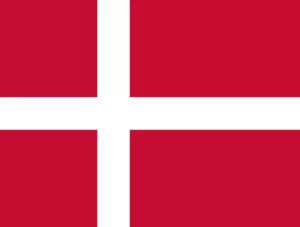 |
Christian Havrehed 黄思远 | |
Christian is our Danish oarsman. He is the first Dane to row across an ocean (together with Sun Haibin) and the first Dane to row around Denmark. Christian lives in Copenhagen. He speaks Mandarin, English, Danish and German. Christian is the project initiator, project manager, expedition leader, fundraiser, and responsible for the project’s overall success. He has studied and worked for 20 years in China. He reads and writes Chinese. He first started learning about Chinese history in 1986 at UWC in Wales and he has promoted Chinese-foreign understanding through maritime adventures since 2001. | |
 |  |
| Sun Haibin 孙海滨 | |
Haibin is our Chinese oarsman. He is the first Chinese, and Asian, to row across an ocean (he did this with Christian). He is Head of the Outdoor Sports Department at Beijing Sports University and an honorary member of the Beijing Triathlon Federation. Haibin lives in Beijing. He only speaks Mandarin. Haibin is our project coordinator in China, responsible for stakeholder management, relationship development, fundraising, Xu Fu Associations liaison, and permission to row out of China. | |
 | 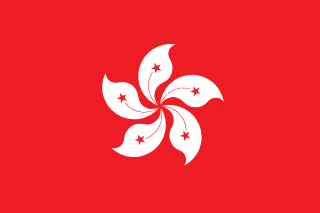 |
| Miya Huang 黃子涵 | |
Miya Huang is a Ph.D. student at the Atmosphere & Ocean Research Institute (AORI) of the University of Tokyo. Having lived in Beijing for 8 years, Hong Kong for 10, Japan for 7, and Switzerland for 1, Miya considers herself an Earthling. Otherwise, it triggers her identity crisis. She speaks fluent English, Mandarin, Cantonese, and Japanese. Her scientific work involves going on research cruises to collect deep sea mud, seawater, and abalone shells to study the history of the Ocean. After reading several books that suggested the ‘Elixir of Life’ Xu Fu was seeking could be derived from abalone shells, she became intrigued by Xu Fu. Miya is our Shore Manager and Fixer during the row in Japan. She is responsible for paving the way for the rowers’ arrival in each port, translating, filming, coordinating with our cooperation partners, making Social Media updates, and generally making sure everyone is happy. | |
 |  |
| Kano Yoshizawa 吉澤 華乃 | |
Kano Yoshizawa was born in Japan. She speaks Japanese and English. She graduated from Rikkyo University in Tokyo and has recently spent a year at the European Film College in Denmark studying economics and filmmaking. Kano works for a film magazine company in Tokyo. To further her career as a film writer/ critic, she will move to London later this summer. Kano is our Driver, Camerawoman, and Fixer for the first half of the row in Japan. With Miya in the car, she will follow the oarsmen on land as they row along the coast, to ensure assistance is always close at hand. Kano will film and photograph as much as possible, create videos for Social Media, support Miya, and help the oarsmen interact successfully with the Japanese people they meet. | |
 |  |
| Takanobu Matsudaira “Nobu” 松平 隆宣 | |
Nobu was born in Japan. He speaks Japanese and English. During his college years, he became fascinated by poetry and the infinity of words. Since childhood he has been interested in music and film, leading to him being a professional DJ in Tokyo and a film student in Denmark. His family owns the Terayama Kan’nonji temple, which has seven mysteries related to the land. It has been in the family’s possession since year 724. One day Nobu may become a monk. Nobu is our Driver, Cameraman, and Fixer for the second half of the row in Japan. With Miya in the car, he will follow the oarsmen on land as they row along the coast, to ensure assistance is always close at hand. Nobu will film and photograph as much as possible, create videos for Social Media, support Miya, and help the oarsmen interact successfully with the Japanese people they meet. | |
 |  |
| Shuji Honma 本間 修二 | |
Shuji Honma is the former Head of Planning and Development at TBS (“Tokyo Broadcasting Service”) Vision. Other roles include executive producer, commercial planner, director, director of program advertising department, program director and producer. Since retirement in 2016 he has been working as a planner and producer for Kyushu island’s regional development and revitalization. Shuji Honma is responsible for PR and media relationships in Japan. Given his seniority and impressive career he can open many doors. He is a member of the Japanese Xu Fu Association and is particularly interested in the Xu Fu site at Nebeoka. | |
 |  |
| Kenji Ito 伊藤 健二 | |
| Kenji Ito is the former Chairman of the Japan Xu Fu Association and the Representative Mt. Fuji Xu Fu Culture Study Group. Kenji Ito is well respected by the various local Japanese Xu Fu Associations and a key promoter and supporter of our project. Kenji Ito is also the author of the book “Foundations of Xu Fu and modern Xu Fu discourse“, published in Japanese. | |
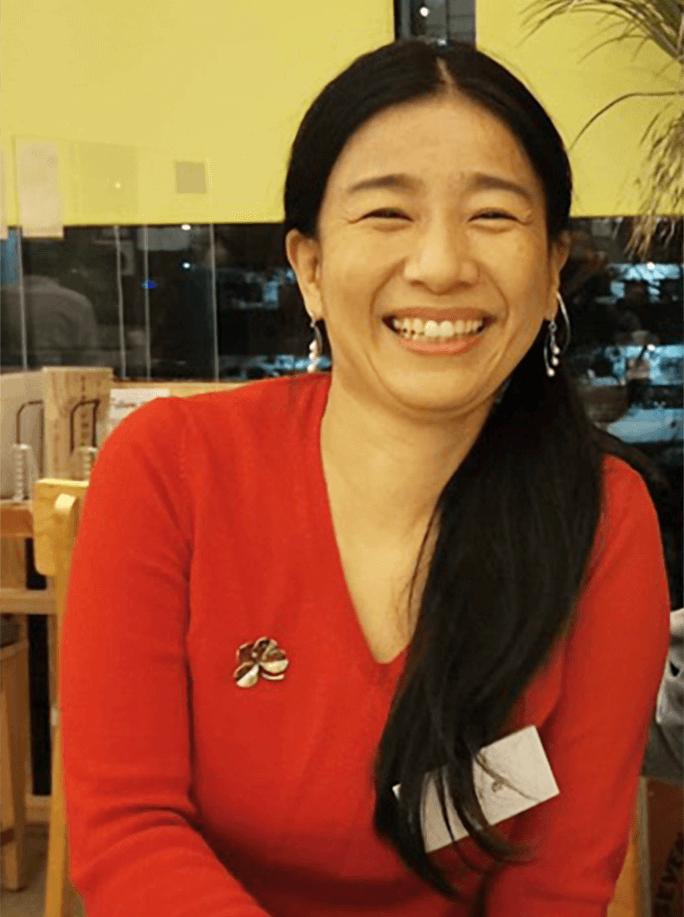 |  |
| Kaori Uchiyama 内山 香織 | |
Kaori is an award-winning photographer and a Japanese teacher. She is based in Japan. Her photography focuses on the environment, with themes encompassing natural landscapes, people, and their lives. The Xu Fu legend in today’s society is one of her research themes for her academic interest. Her experiences have helped her build better insights and perspectives. She now feels ready to expand her scope into ecology, the environment, and our livelihood. The legend of Xu Fu has much to teach us about how we may benefit from herbs and the ancient wisdom of living in harmony with nature. Kaori is our fixer in Japan. She is responsible for building and maintaining relationships with the various Japanese Xu Fu Associations and other stakeholders. Kaori Uchiyama Photography | |
 |  |
| Yusuke Morotomi 諸富 裕典 | |
Yusuke is a LEGO® Serious Play® facilitator, UWC alumni, and a businessman residing in Indochina for over 20 years. His ancestors are from the region of Chikugo River where the highest concentration of Xu Fu sites in Japan is found, and his surname is related to Xu Fu. Yusuke speaks exceptional English, is fluent in Chinese, and has excellent project management skills. He has a spiritual approach to life and enjoys visiting temples. He currently lives in Cambodia. Yusuke is our Japanese-English-Chinese language and culture translator. | |
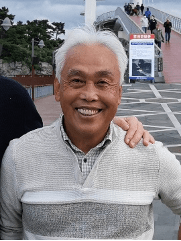 |  |
| Albert Liang 梁基烔 | |
Albert is a retired Korean banker, who spent 20 years working in Qingdao, China. It was during his stay in Qingdao that Albert first heard of Xu Fu. During Corona lockdown Albert wrote a Master Thesis about Xu Fu “A Study of the Written Records of the Story of Xu Fu – Focusing on the Old Records of China, Korea, and Japan”. Albert lives in Jeju where he also acts as a tourist guide. Albert manages our relationship with the Korean Xu Fu Associations. In addition to Korean and Chinese, Albert speaks and writes English fluently. | |
There are no reliable records of the type of vessel Xu Fu used, so it has not been possible to create a plausible replica. For lack of better, an ocean rowing boat is a good proxy.
An Ocean rowing boat is completely human-powered, slow, drifts significantly due to windage and lack of keel, has limited ability to travel to windward, and navigation of strong currents is precarious. An ancient vessel would have experienced similar challenges.
Trying to imitate the safety standards of 210BC would be foolish and the boat is therefore equipped with modern safety, communication, and navigation equipment.

Lack of onboard comfort, cramped quarters, language barriers, cultural differences, and fatigue will test the teamwork and resolve of the quartet, providing some insight into the hardship that Xu Fu and his crew will have experienced.
In 2001 Danish adventurer and sinologist Christian Havrehed founded the “Yantu Project” to promote Sino-Western understanding through cross-cultural nautical adventures.
In the first Yantu Project Christian and Beijing Sports University teacher Sun Haibin rowed unsupported 5,000km across the Atlantic Ocean in 56 days, raising USD91,000 to aid Chinese students studying overseas. As a result, Christian became the first Dane to row across the Atlantic, and Sun Haibin the first Chinese – and Asian. The project was highly praised in China and the West and was highly visible in the media.
Christian and Sun Haibin have now come together again to promote the Yantu Project spirit through a new epic maritime adventure not attempted before; the New Xu Fu Voyage East.
Click Here for media coverage to date
Feel free to download and use the images below. Please Credit: Yantu Project
 | 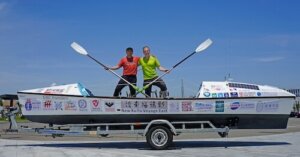 |
| Image 1 – Download Here | Image 2 – Download Here |
 |  |
| Image 3 – Download Here | Image 4 – Download Here |
 |  |
| Image 5 – Download Here | Image 6 – Download Here |
23 years on. Same humor, same spirit. Together we achieve more 合作可以更多
 |  |
| 2001, Atlantic Ocean – Download Here | 2024, East China Sea – Download Here |